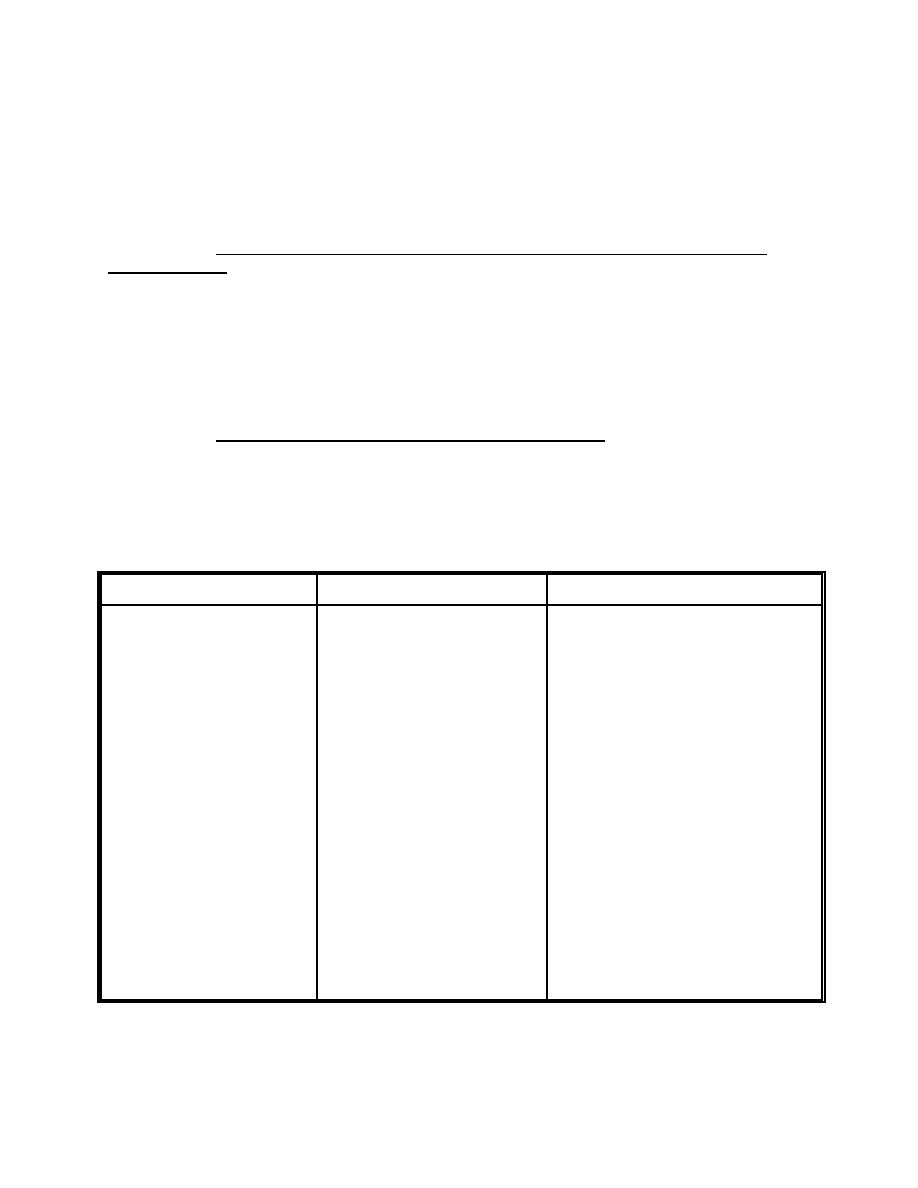
MIL-HDBK-1005/16
c)
May contain high concentrations of dissolved
solids, chloride, sulfates, and sodium if seawater flushing or
ballast systems are used
3.3
Quantifying Wastewater Flows and Loads--Design Basis
Development. Wastewater facilities cannot be designed without
defining the wastewater flows and pollutant loads that the
facilities will need to collect and treat. It is important to
base the design flows and loads on measurement of actual flows
and loads for the wastewaters to be treated. If you are unable to
collect flow and load data, base the estimates on information
about similar wastewaters or on the information included here and
in WEF MOPs FD-4, FD-5, and MOP 8 (Volume I).
3.3.1
Wastewater Flow Estimate Terminology. Estimate
average, minimum, and maximum wastewater flows for proper design
of wastewater facilities. Table 3 lists the flow rates typically
used in wastewater facilities design.
Table 3
Wastewater Flow Estimates for Facilities Design
Flow Type
Description
Design Use
Annual average
Annual average of
Estimate of annual
daily flow
daily flows
operating costs
(chemicals, power, etc.)
Maximum month flow
Highest monthly
Design of most unit
average daily flow
processes including
biological processes
Maximum daily flow
Highest 24-hour flow
Design of certain process
in a year
units (such as settling
tanks)
Minimum flow
Least instantaneous
Design of sewers and
flow
plant conduits to avoid
deposition problems at
low flows
Peak flow
Highest instantaneous
Design of sewers and
flow
hydraulic elements of
treatment plant (such as
pipes, pumps, weirs, and
channels)
31



 Previous Page
Previous Page
